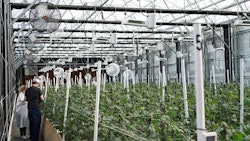SMITHS FALLS, ON and NEW YORK, Oct. 1, 2020 /CNW/ - PRESS RELEASE - Canopy Growth Corporation and Acreage Holdings, Inc. announced today that following the implementation of their amended arrangement, Acreage has developed a plan to market Canopy Growth's diverse beverage portfolio in the United States.
Leading with legal adult-use markets in Illinois and California, Acreage anticipates launching Canopy Growth's select, sessionable THC beverage formulations in summer 2021. In addition to selling products in its own dispensaries, Acreage will access existing distribution channels through strategic corporate relationships.
"We have had an incredibly successful introduction into the Canadian cannabis-infused beverage industry with over 1.7 million cans of our THC-infused RTD beverages, like Tweed's Houndstooth & Soda and Bakerstreet & Ginger sold to date," shared Canopy Growth CEO David Klein. "We introduced a new product category to cannabis consumers that we knew had the potential to disrupt one of the most mature industries and since launching in Canada, Canopy Growth now owns 5 of the top 6 SKUs in the beverage category with a 74% market share. We are excited for Canopy's beverages to be introduced to the U.S. market next summer."
"We see THC-infused beverages as a game-changer in U.S. cannabis, and we are excited to launch Canopy Growth's unique beverage offerings to our core markets offering the greatest growth potential next year," said Bill Van Faasen, interim CEO of Acreage Holdings. "We are already working on our beverage production capabilities, and look forward to tapping the wealth of experience and research Canopy can offer following its successful entry in the category last year."
The companies look forward to bringing a sessionable infused beverage offering to U.S. consumers that will more closely liken itself to current beverage-alcohol serving sizes.























